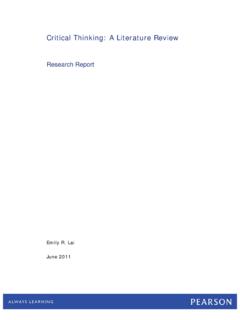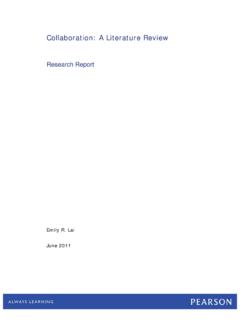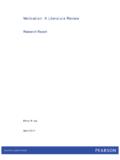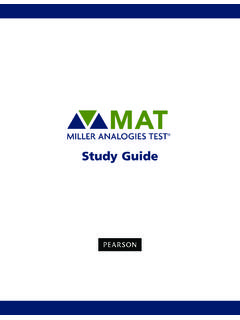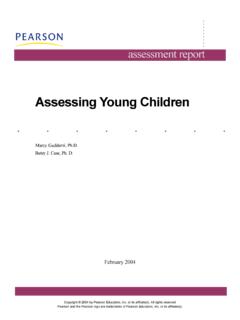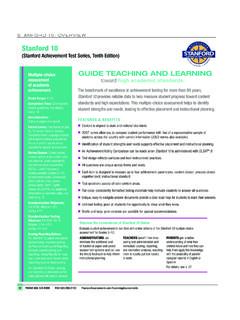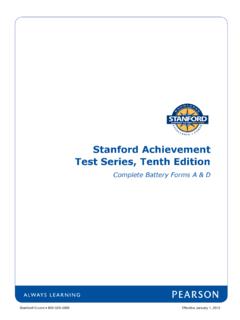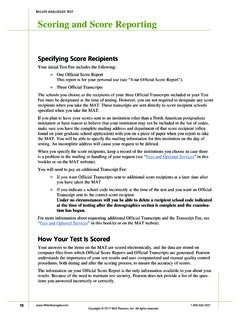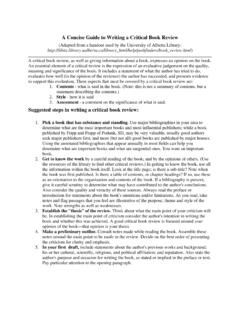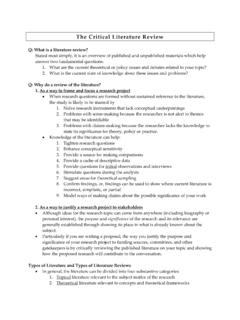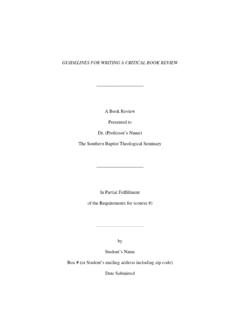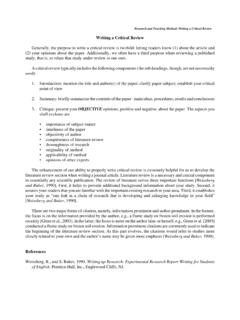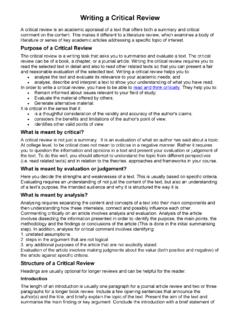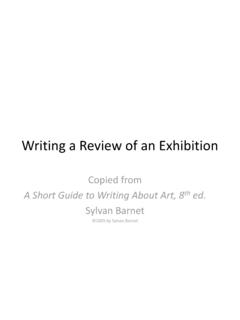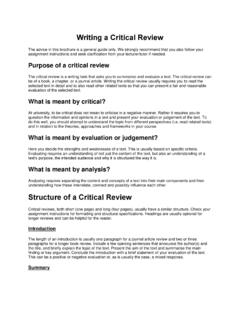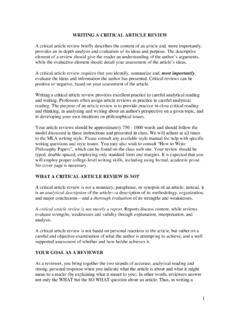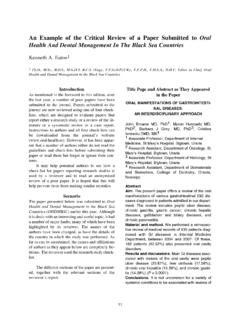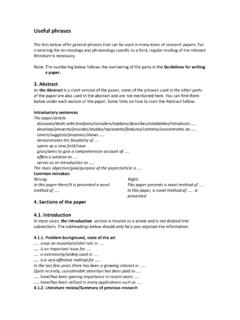Transcription of Critical thinking: A literature review
1 Critical thinking : a literature review Research Report Emily R. Lai June 2011 Critical thinking 1 About Pearson Pearson, the global leader in education and education technology, provides innovative print and digital education materials for pre-K through college, student information systems and learning management systems, teacher licensure testing, teacher professional development, career certification programs, and testing and assessment products that set the standard for the industry.
2 Pearson s other primary businesses include the Financial Times Group and the Penguin Group. For more information about the Assessment & Information group of Pearson, visit About Pearson s Research Reports Pearson s research report series provides preliminary dissemination of reports and articles prepared by TMRS staff, usually prior to formal publication. Pearson s publications in .pdf format may be obtained at: Critical thinking 2 Abstract Critical thinking includes the component skills of analyzing arguments, making inferences using inductive or deductive reasoning, judging or evaluating, and making decisions or solving problems.
3 Background knowledge is a necessary but not a sufficient condition for enabling Critical thought within a given subject. Critical thinking involves both cognitive skills and dispositions. These dispositions, which can be seen as attitudes or habits of mind, include open- and fair-mindedness, inquisitiveness, flexibility, a propensity to seek reason, a desire to be well-informed, and a respect for and willingness to entertain diverse viewpoints. There are both general- and domain-specific aspects of Critical thinking .
4 Empirical research suggests that people begin developing Critical thinking competencies at a very young age. Although adults often exhibit deficient reasoning, in theory all people can be taught to think critically. Instructors are urged to provide explicit instruction in Critical thinking , to teach how to transfer to new contexts, and to use cooperative or collaborative learning methods and constructivist approaches that place students at the center of the learning process. In constructing assessments of Critical thinking , educators should use open-ended tasks, real-world or authentic problem contexts, and ill-structured problems that require students to go beyond recalling or restating previously learned information.
5 Such tasks should have more than one defensible solution and embed adequate collateral materials to support multiple perspectives. Finally, such assessment tasks should make student reasoning visible by requiring students to provide evidence or logical arguments in support of judgments, choices, claims, or assertions. Keywords: Critical thinking , reasoning, problem solving Critical thinking 3 Acknowledgements The author would like to thank Janet Fowler for assistance in conducting literature searches and the following reviewers for their helpful comments and suggestions on an earlier draft of this paper: Michael Bay-Borelli, Rob Kirkpatrick, Anli Lin, Changjiang Wang, and Hua Wei.
6 Critical thinking 4 Critical thinking : a literature review Educators have long been aware of the importance of Critical thinking skills as an outcome of student learning. More recently, the Partnership for 21st Century Skills has identified Critical thinking as one of several learning and innovation skills necessary to prepare students for post-secondary education and the workforce. In addition, the newly created Common Core State Standards reflect Critical thinking as a cross-disciplinary skill vital for college and employment.
7 Despite widespread recognition of its importance, there is a notable lack of consensus regarding the definition of Critical thinking . The purposes of this literature review are to (a) explore the ways in which Critical thinking has been defined by researchers, (b) investigate how Critical thinking develops (c) learn how teachers can encourage the development of Critical thinking skills in their students, and (d) review best practices in assessing Critical thinking skills. Definition of Critical thinking Theoretical Background The literature on Critical thinking has roots in two primary academic disciplines: philosophy and psychology (Lewis & Smith, 1993).
8 Sternberg (1986) has also noted a third Critical thinking strand within the field of education. These separate academic strands have developed different approaches to defining Critical thinking that reflect their respective concerns. Each of these approaches is explored more fully below. Critical thinking 5 The philosophical approach. The writings of Socrates, Plato, Aristotle, and more recently, Matthew Lipman and Richard Paul, exemplify the philosophical approach. This approach focuses on the hypothetical Critical thinker, enumerating the qualities and characteristics of this person rather than the behaviors or actions the Critical thinker can perform (Lewis & Smith, 1993; Thayer-Bacon, 2000).
9 Sternberg (1986) has noted that this school of thought approaches the Critical thinker as an ideal type, focusing on what people are capable of doing under the best of circumstances. Accordingly, Richard Paul (1992) discusses Critical thinking in the context of perfections of thought (p. 9). This preoccupation with the ideal Critical thinker is evident in the American Philosophical Association s consensus portrait of the ideal Critical thinker as someone who is inquisitive in nature, open-minded, flexible, fair-minded, has a desire to be well-informed, understands diverse viewpoints, and is willing to both suspend judgment and to consider other perspectives (Facione, 1990).
10 Those working within the philosophical tradition also emphasize qualities or standards of thought. For example, Bailin (2002) defines Critical thinking as thinking of a particular quality essentially good thinking that meets specified criteria or standards of adequacy and accuracy. Further, the philosophical approach has traditionally focused on the application of formal rules of logic (Lewis & Smith, 1993; Sternberg, 1986). One limitation of this approach to defining Critical thinking is that it does not always correspond to reality (Sternberg, 1986).
